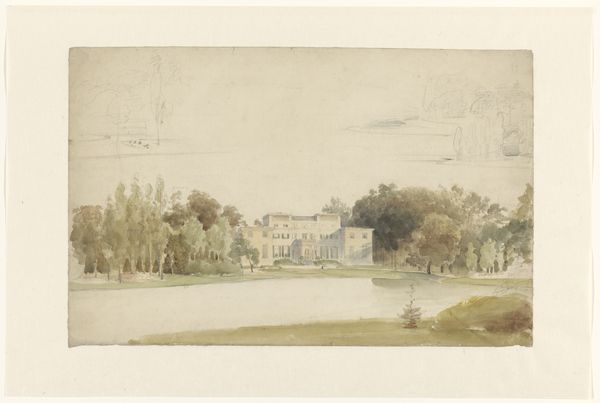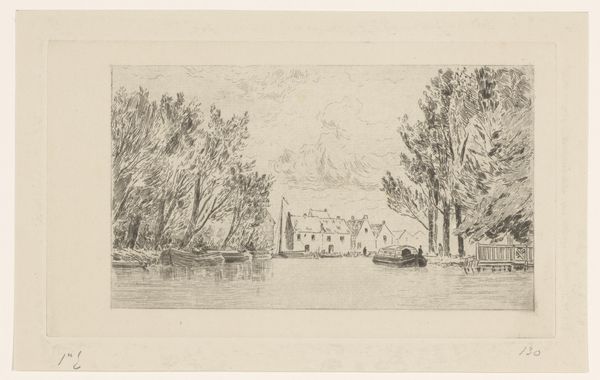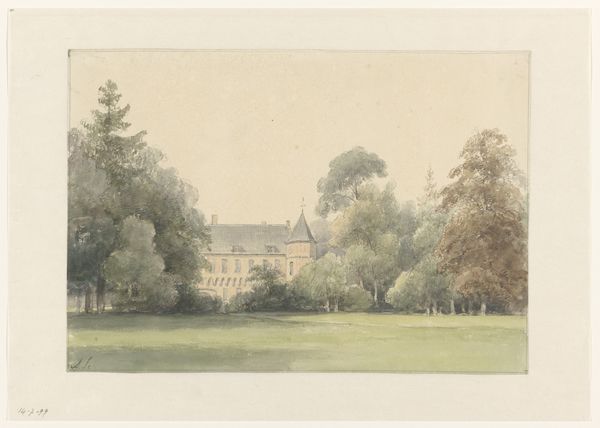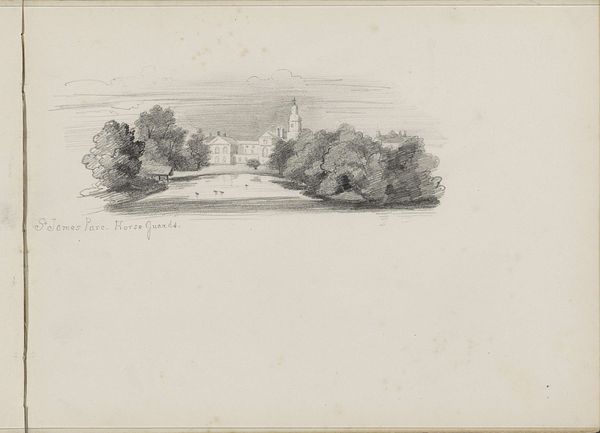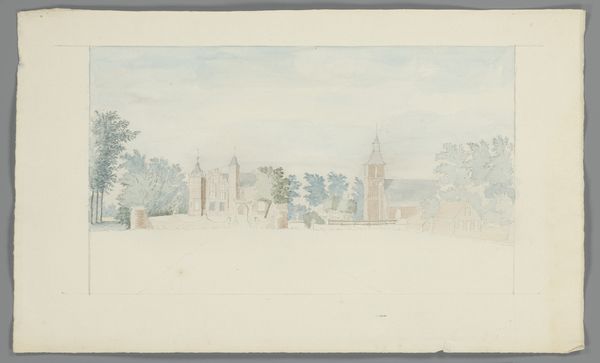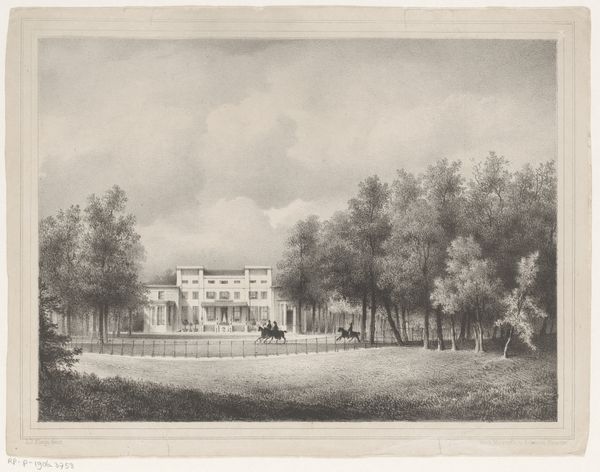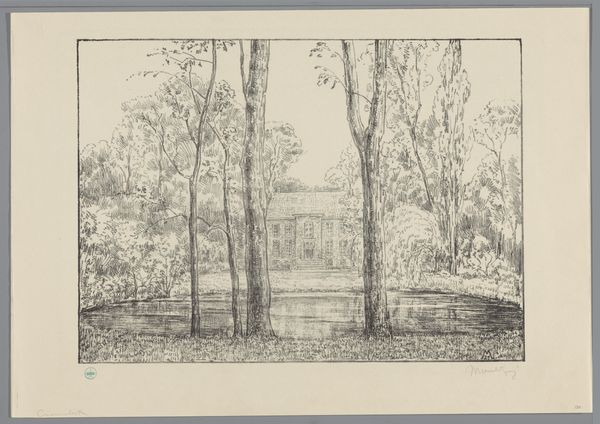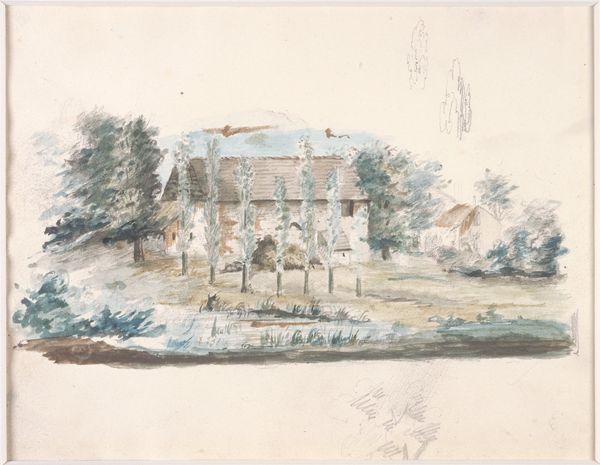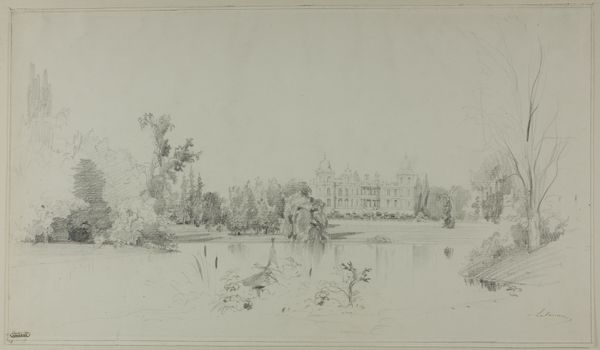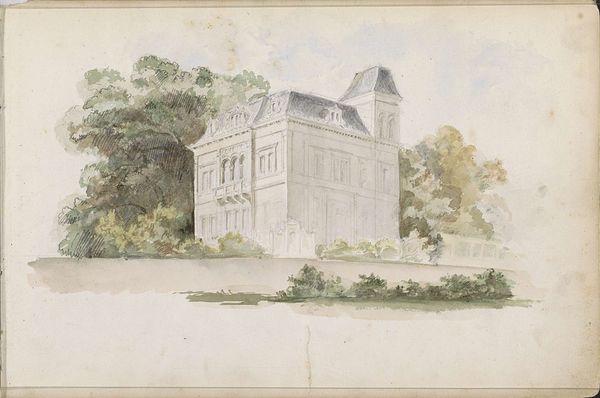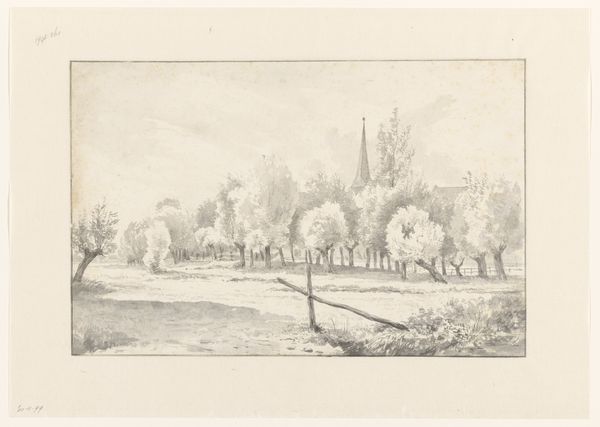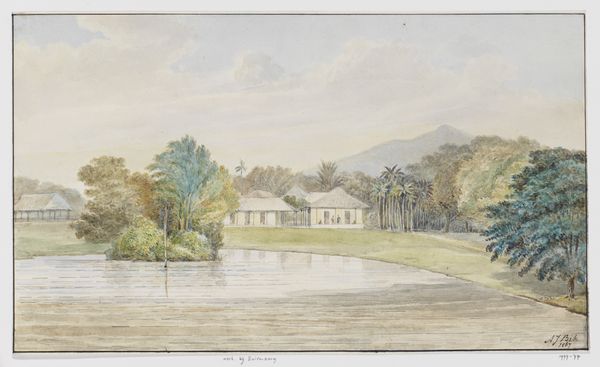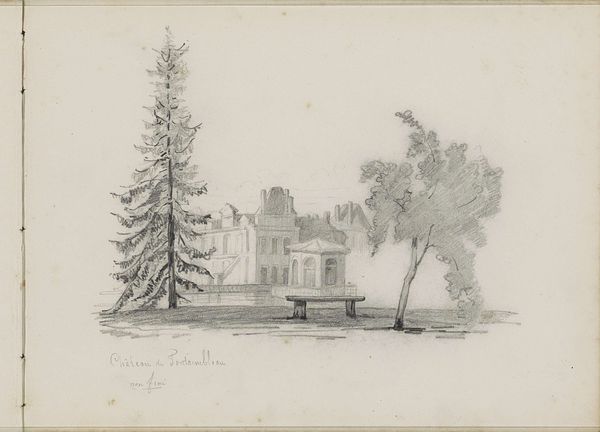
painting, watercolor
#
painting
#
landscape
#
river
#
watercolor
#
watercolour illustration
#
watercolor
#
realism
Dimensions: height 340 mm, width 486 mm
Copyright: Rijks Museum: Open Domain
Curator: Ah, a tranquil scene. Lodewijk Johannes Kleijn's "Huis aan de Vliet te Voorburg," a watercolor painting created sometime between 1827 and 1897. Editor: There's a stillness here, almost haunting. The soft grays and greens create this very placid yet melancholy mood. The watercolor application seems almost ethereal. Curator: The work invites a reflection on 19th-century Dutch society, I think. Kleijn’s representation of the stately home by the Vliet river hints at the prosperity enjoyed by a certain class while, of course, concealing the realities of colonialism and the working class that supported such comfort. The idyllic imagery, however, subtly contrasts the broader context of exploitation. Editor: Interesting point. Looking at the formal aspects, it's the careful layering of the paint that holds my gaze. Notice how the verticality of the trees is juxtaposed with the horizontality of the water line, dividing the composition. The reflection adds a nice mirroring symmetry too, while slightly distorting the original forms. There's a kind of calculated pictorial architecture at play. Curator: Indeed. That calculated architecture speaks to a deliberate construction of national identity, a kind of visual rhetoric that seeks to affirm particular values through seemingly benign landscape depictions. These works become stages where narratives of belonging are performed. Were those allowed on those lawns included people of color, queer folks, poor people? I wonder what these houses represented for different classes of the time? Editor: Perhaps, but can we separate the artist's conscious intention from the inherent qualities of the image itself? The semiotic reading is there, the balance of tones, the texture creating depth—elements working together irrespective of societal narratives, providing viewers aesthetic pleasure. Curator: The aesthetic experience can never exist outside the frame of the sociopolitical, though. Beauty is not neutral; it is coded and carries with it a history of power relations. Editor: An important consideration. Still, the artistic strategies should not be dismissed because it allows for a universal experience, reaching viewers across different eras and social contexts. Curator: Perhaps the tension between those universal and particular readings is what makes this artwork enduring. Editor: A fitting perspective to carry forward. Thank you.
Comments
No comments
Be the first to comment and join the conversation on the ultimate creative platform.
